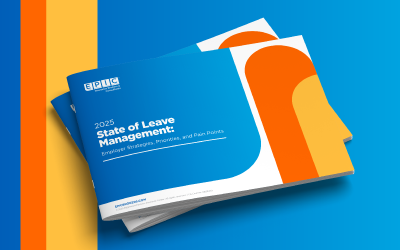Quick Facts
- In 2020, the regulatory agencies issued a final rule extending several notice and disclosure deadlines applicable to ERISA benefits during the “Outbreak Period” as defined by the National Emergency.
- The rule was valid during the National Emergency for up to 12 months.
- Although the National Emergency remains in place, the expiration of the 12-month period was February 28, 2021.
- To avoid complete expiration of the final rule the agencies implemented a “Disregarded Period,” stating that if during the National Emergency a participant or plan sponsor is subject to a statutory deadline for a notice or disclosure subject to the rules, that deadline is delayed for up to 12 months from the original deadline, or until the end of the Outbreak Period, whichever is sooner.
The Department of Labor (DOL) has issued new guidance regarding notice and disclosure timeframe relief for employee benefit plans and plan participants due to COVID-19. EBSA Disaster Relief Notice 2021-01 (The Joint Notice) clarifies that the deadline for extended timeframes, such as a COBRA election, are based on each participant’s individual circumstances, rather than on a fixed period applicable to all notices and disclosures. This interpretation will create significant administrative challenges for plan sponsors and administrators.
Background
After a National Emergency was declared as of March 1, 2020, regulatory agencies jointly issued a final rule in April extending several specific notice and disclosure deadlines applicable under the Health Insurance Portability and Accountability Act (HIPAA), the Consolidated Omnibus Budget Reconciliation Act (COBRA), and the Employee Retirement Income Security Act of 1974 (ERISA). The rule effectively extended the time participants were given for things like COBRA elections, COBRA payments, HIPAA special enrollments, and ERISA claims filing and appeals. In addition to the final rule, the DOL issued Disaster Relief Notice 2020-01, granting some leniency regarding enforcement of the timing and delivery method for plan sponsor disclosures required under ERISA. The rules apply broadly to all employer-sponsored benefits subject to ERISA and COBRA. The Department of Health & Human Services (HHS) indicated that similar relief was available to non-federal governmental plans as well.
For the period of time beginning March 1, 2020, until 60 days after the National Emergency is over, all group health plans, disability plans, other employee welfare benefit plans, and employee pension plans must disregard this time period (the “Outbreak Period”) when administering plans with respect to notices, disclosures and other deadlines covered by the rule.
The Problem
In the case of a National Emergency, federal law allows regulatory agencies to suspend statutory requirements for up to 12 months. When the final rule was issued in April 2020, it was not expected that the National Emergency would still be in place more than a year later. As we approached the end of the 12 months from the beginning of the relief period, many questions have been raised about when statutory deadlines, such as the COBRA election 60-day election period, would revert to normal timeframes.
The DOL’s Answer
In Notice 2021-1, the DOL states that the 12-month limit on the agencies’ ability to disregard a statutory requirement applies on a participant by participant, or event by event, basis. In other words, if during the National Emergency a participant or plan sponsor is subject to a statutory deadline for a notice or disclosure subject to these rules, that deadline is delayed for up to 12 months from the original deadline, or until the end of the Outbreak Period, whichever is sooner. This period is referred to as the “Disregarded Period.”
This interpretation means that a participant’s deadline for something like a COBRA election, or a HIPAA special enrollment, is unique to that participant, and is based on the original deadline that would have applied absent the National Emergency. In no case will a requirement be delayed for any individual by more than one year.
Examples
In Notice 2021-1, the DOL provides two examples of how this interpretation would apply to a COBRA election, and one example for an employer required notice or disclosure. We have provided some additional examples here to help employers sort out how this will affect various situations.
DOL Examples
- If a qualified beneficiary would have been required to make a COBRA election by March 1, 2020, the Joint Notice delays that requirement until February 28, 2021, which is the earlier of one year from March 1, 2020 or the end of the Outbreak Period (which remains ongoing).
- If a qualified beneficiary would have been required to make a COBRA election by March 1, 2021, the Joint Notice delays that election requirement until the earlier of one year from that date (i.e., March 1, 2022) or the end of the Outbreak Period.
- If a plan (or employer/plan sponsor) would have been required to furnish a notice or disclosure by March 1, 2020, the relief under the Notices would end with respect to that notice or disclosure on February 28, 2021. The responsible plan fiduciary would be required to ensure that the notice or disclosure was furnished on or before March 1, 2021
Other Examples to Illustrate How the Joint Notice Will Apply to Various Situations
- Assume an employee is married on January 15, Consistent with the HIPAA special enrollment rules, the plan would normally require the employee to notify the employer of the marriage by February 14, 2021 (within 30 days) to enroll the spouse mid plan year. The Joint Notice would permit the employee to notify the employer within one year of the regular notice date of February 14th, 2021, or the end of the Outbreak Period, whichever is earlier.
- Assume a COBRA qualified beneficiary (QB) enrolls in COBRA coverage and makes payments for a number of months. However, the QB fails to make the COBRA payment for January 2021 coverage by normal grace period of January 31, 2021. The Joint Notice allows the QB to make that payment within one year of the normal January 31, 2021 grace period deadline, or by the end of the Outbreak Period, whichever is sooner.
In the above examples, we all hope that the Outbreak Period will be over before the one-year Joint Notice extension, but that is yet to be determined.
- Assume an employee had a baby April 20, 2020. Consistent with the HIPAA special enrollment rules the plan would normally require the employee to notify the employer of the birth by May 20, 2020 (30 days from the birth). The Joint Notice would permit the employee to notify the employer within one year of the normal May 20, 2020 deadline, or the end of the Outbreak Period, whichever is earlier. Note that in the case of the birth of a child, HIPAA special enrollment rules would require the employer to allow for coverage retroactive to the date of birth.
Example 3 illustrates that individuals who had normal deadlines back in early 2020 will likely need to make any required elections, payments, or notices soon (within the one-year deadline) because it is unlikely that the Outbreak Period is going to end very soon.
- Assume a health plan normally has a claim filing deadline that requires participants to submit all claims incurred during the plan year within 90 days after the end of the plan year. The Joint Notice would allow participants to submit claims that were incurred during the plan year for up to one year after the normal deadline, or by the end of the Outbreak Period, whichever is sooner.
Summary
The decision to extend relief periods on a case-by-case basis may be beneficial to many participants but will obviously create significant compliance and administrative challenges for employers. Also, while not clearly required, the guidance encourages employers to communicate revised deadlines for elections, payments, and losses of coverage when possible.
EPIC Employee Benefits Compliance Services
For further information on this or any other topics, please contact your EPIC consulting team.
Learn About Our Employee Benefits Compliance Services
EPIC offers this material for general information only. EPIC does not intend this material to be, nor may any person receiving this information construe or rely on this material as, tax or legal advice. The matters addressed in this document and any related discussions or correspondence should be reviewed and discussed with legal counsel prior to acting or relying on these materials.
DOWNLOADABLE RESOURCES
Sign up for our Compliance Matters Newsletter
You’ll receive our monthly newsletter, as well as special compliance alerts and invitations to our compliance webinars
Related Content
Products
Employee Benefits Consulting
Our dedicated benefits team is focused on delivering better outcomes – to both your benefits program and ...
Products
Compliance
We provide comprehensive consulting services and in-depth education regarding the ever-changing employee ...
Products
HR Technology Solutions
From advising startups on how to build a solid Human Resources (HR) infrastructure, to consulting with ...


